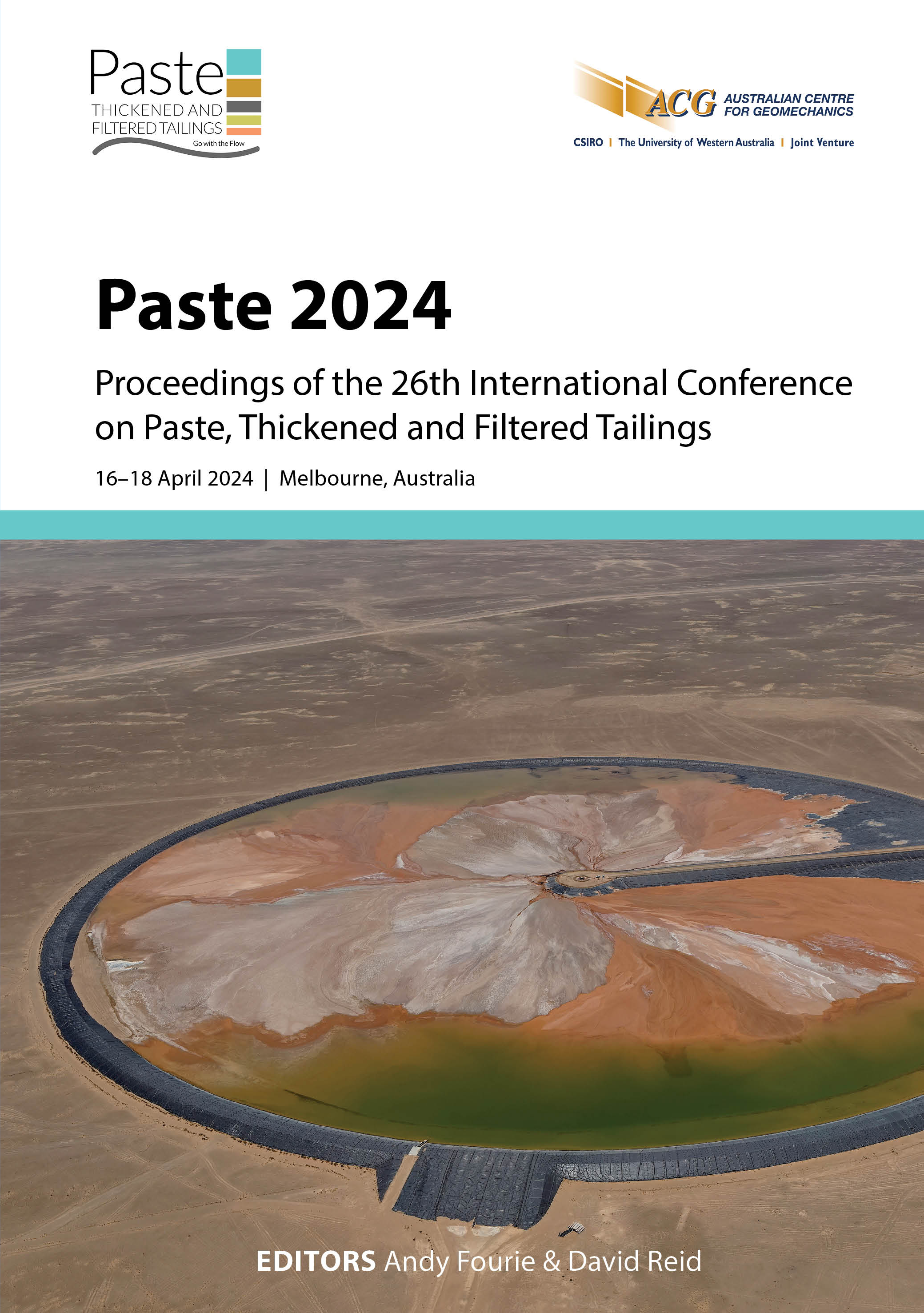ATA® treated tailings for underground backfill: a Harmony Gold case study

|
Authors: Spagnuolo, C; Fischmann, AJ; Sofrà, F; de Kretser, R; Cavalida, R; Brooks, E; Raath, J |
DOI https://doi.org/10.36487/ACG_repo/2455_41
Cite As:
Spagnuolo, C, Fischmann, AJ, Sofrà, F, de Kretser, R, Cavalida, R, Brooks, E & Raath, J 2024, 'ATA® treated tailings for underground backfill: a Harmony Gold case study', in AB Fourie & D Reid (eds), Paste 2024: Proceedings of the 26th International Conference on Paste, Thickened and Filtered Tailings, Australian Centre for Geomechanics, Perth, pp. 515-532, https://doi.org/10.36487/ACG_repo/2455_41
Abstract:
Harmony Gold’s Kusasalethu mine is a deep-level underground gold mine located 90 km west of Johannesburg, South Africa. Kusasalethu utilises woven geotextile contained backfill for underground support. The operation currently requires tailings to be classified and densified with a hydrocyclone, with only hydrocyclone underflow utilised for backfill. This paper demonstrates how the full tailings stream can be used as backfill via the ATA® rapid dewatering technology. ATA is a three-component system in which the fines and coarse fractions of a split tailings stream are each treated with complementary polymeric reagents and recombined to create anchored particles that capture fine particles whilst increasing dewatering rate. A pilot test was conducted at Kusasalethu in 2023, treating 25 tph of tailings with ATA and dewatered in 1 m3 geotextile bags, simulating underground containment. Dewatered and contained solids were subjected to compression testing to confirm the maximum load carried at incremental displacement, simulating backfill compression by a hanging wall. The load-bearing capacity at a given displacement was markedly better compared to classified backfill. Supplementary lab-scale ATA tests were conducted to confirm the geotechnical properties of ATA treated gold tailings from an Australian operation compared to tailings treated with conventional flocculation. Results from this study showed that ATA treated tailings produced materially higher hydraulic conductivities at a given solids concentration compared to conventional flocculation. This study also showed that fines capture and released water clarity was markedly improved in ATA treatment compared to conventional flocculation. Shear yield stresses and dewatering rate after ATA treatment were significantly increased over untreated material, reflecting development of an open, inter-particle structure. The use of ATA for backfill enables incorporation of fine tailings underground. This lessens the load on existing wet tailings storage facilities whilst also producing higher stability backfill with an increased dewatering rate.
Keywords: backfill, polymer treated backfill, geotechnical properties, geotextile dewatering, flocculation, new technologies, case studies
References:
Berg, MC, Dise, JH, Petersen, KT, Soane, D, Stokes, KK, Ware Jr, W & Thakrar, AC 2013, Systems and Methods for Removing Finely Dispersed Particulate Matter From a Fluid Stream, U.S. Patent 8,353,641, Clean Teq Pty Ltd, Notting Hill.
de Kretser, RG, Usher, SP, Scales, PJ, Landman, KA & Boger, DV 2001, ‘Rapid measurement of dewatering design and optimization parameters’, AIChE Journal, vol. 47, pp. 1758–1769.
Fourie, AB, Copeland, AM & Barrett, AJ 1994, ‘Optimization of the as-placed properties of hydraulic backfill’, Journal of the South African Institute of Mining and Metallurgy, vol. 94, pp. 199–209.
Nguyen, DQ & Boger, DV 1985, ‘Direct yield stress measurement with the vane method’, Journal of Rheology, vol. 29, pp. 335–347.
© Copyright 2025, Australian Centre for Geomechanics (ACG), The University of Western Australia. All rights reserved.
View copyright/legal information
Please direct any queries or error reports to repository-acg@uwa.edu.au
View copyright/legal information
Please direct any queries or error reports to repository-acg@uwa.edu.au
